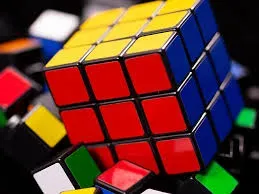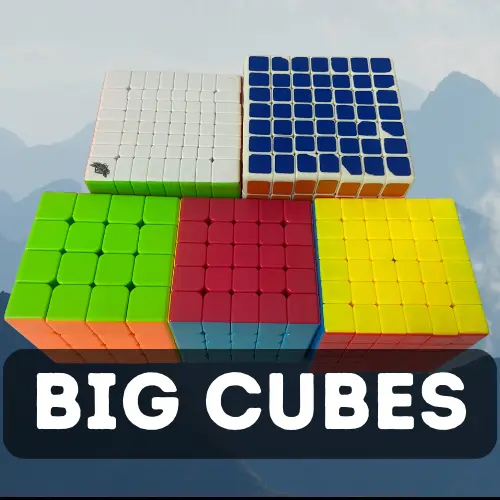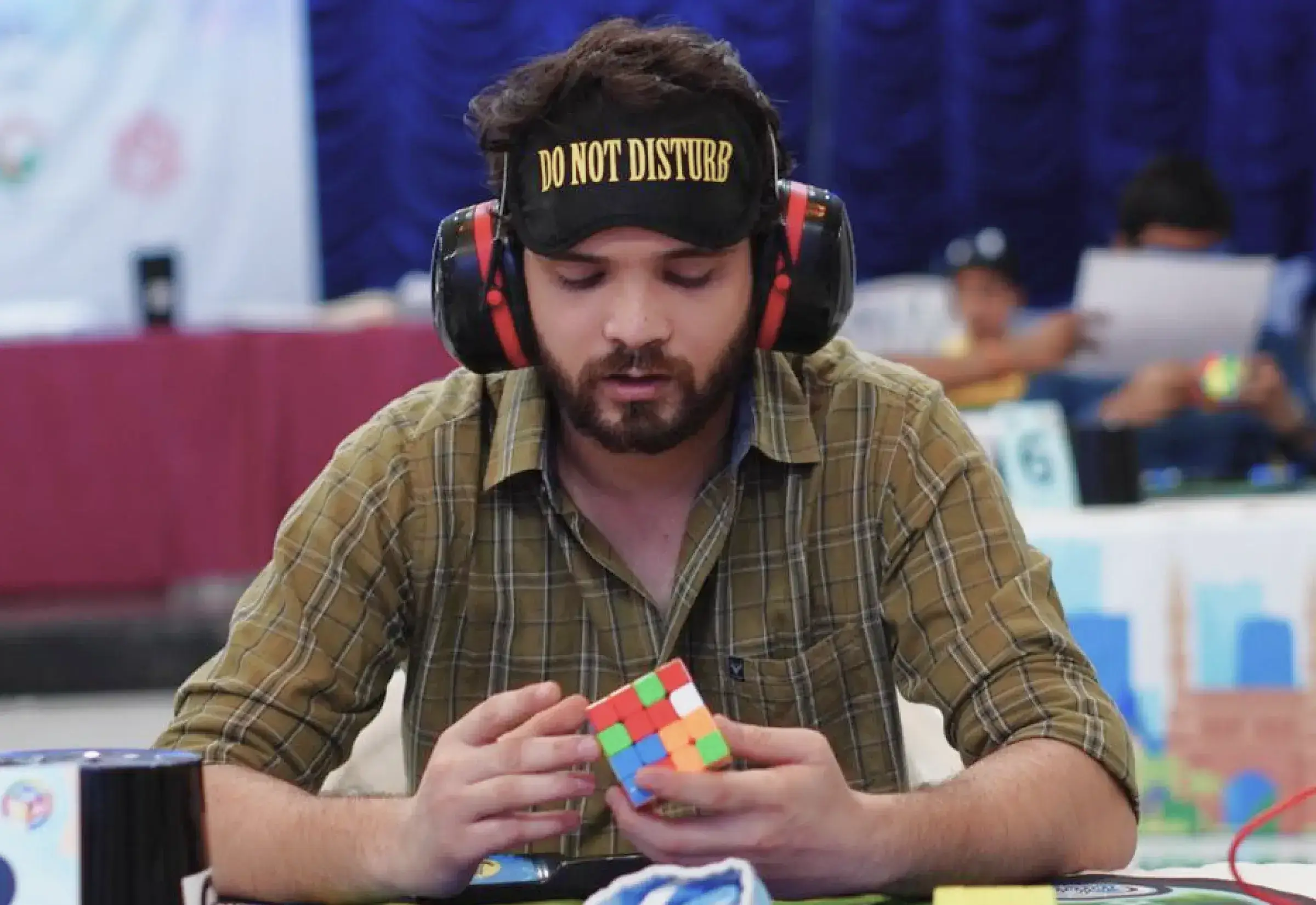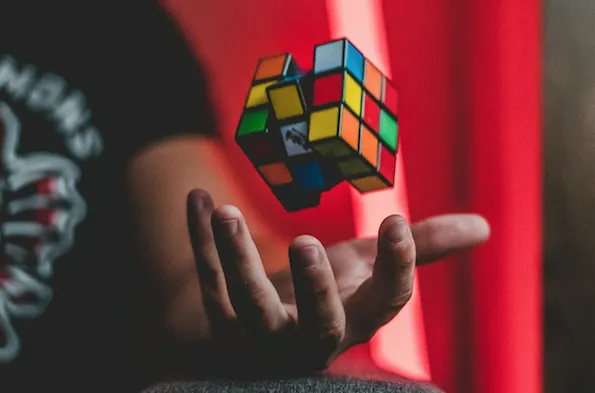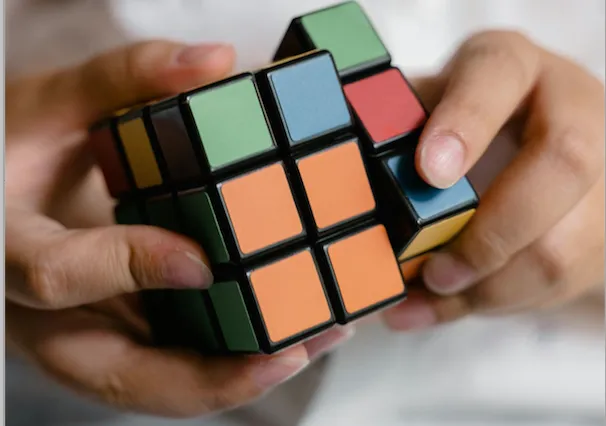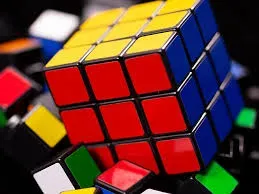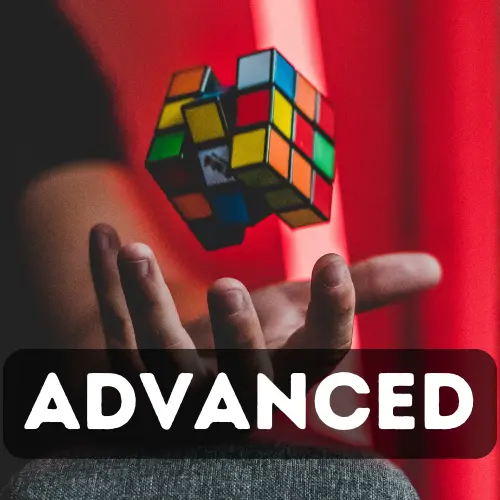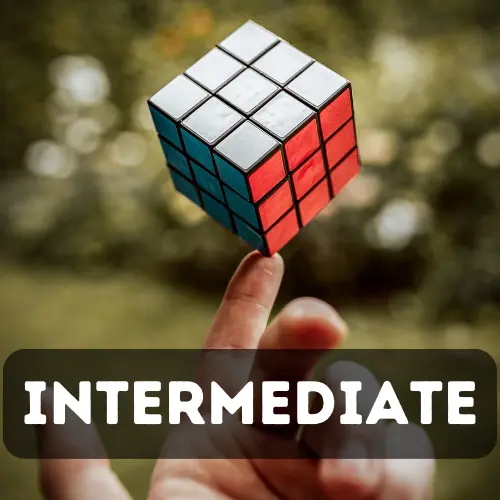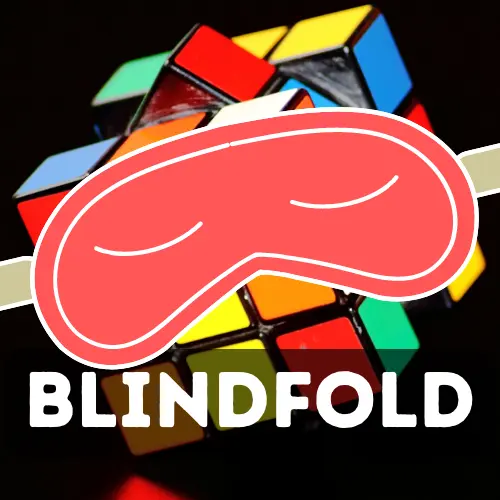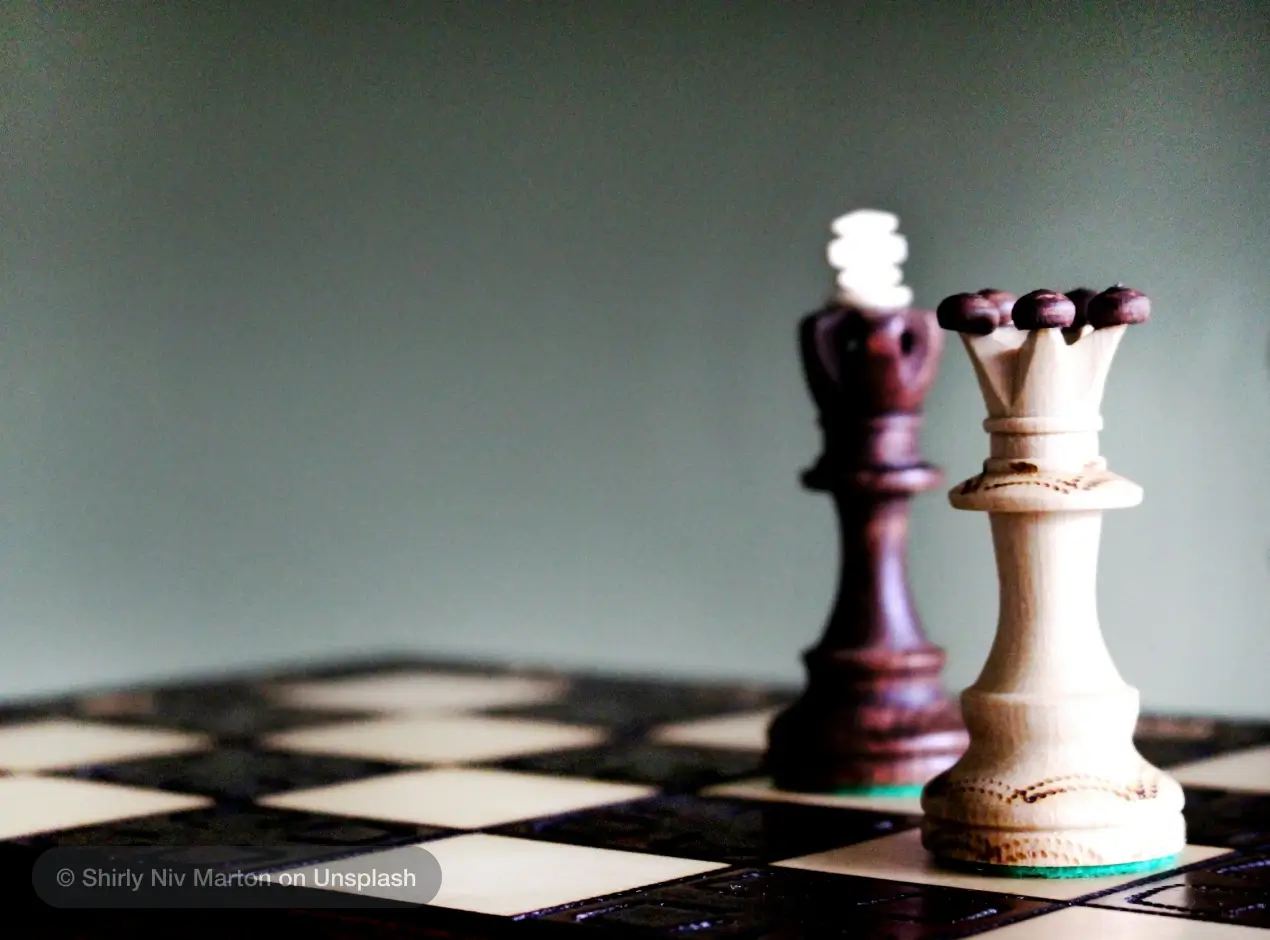What is Rubik's Cube
A Rubik's Cube is a three-dimensional combination puzzle. Rubik's comprises 26 smaller cubes, also called "cubies," arranged in a 3x3x3 grid. It looks benign with single-colored faces on each side. Once the square pieces are scrambled - the game is on. The goal is to solve the puzzle by returning each face to a single color.
Hungarian architect Ernő Rubik invented it in 1974. Rubik used it to teach 3D concepts to his students. Soon, it transcended the architecture classrooms and earned global fame.
In its original design, it had colored stickers on all six sides. Later, the white face was aligned opposite to the yellow face, the red opposite to the orange face, and the blue opposite to the green face. An internal pivot mechanism facilitates the twisting and turning of the rows and columns.
The cubers demonstrate a high cognitive ability and problem-solving skills. Cubers flaunt their finesse through speedcubing and solving the puzzle blindfolded. International competitions are held under the governance of a regulatory body named the World Cube Association.
This simple low-tech puzzle enjoys unprecedented popularity. The cube also became a symbol of intelligence and creativity in the 1980s, often associated with intellectual achievement and becoming a pop culture icon. These factors combined propelled the Rubik's Cube to global fame, making it one of the most recognizable and beloved puzzles. The craze for cubing led to further inventions of larger Cubes and also in diverse shapes.
It even won the Best Puzzle award in the 1980 German Game of the Year. It entered the US National Toy Hall of Fame in 2014. Stepping into its 50th year in 2024, Rubik's Cube registered a global sale of about 500 million units. It became the best-selling puzzle game and toy ever.
History of Rubik's Cube
Four years before Erno Rubik invented the 3x3 cube, in 1970, the 2x2 cube came into being. An American puzzle designer Larry D Nichols invented it. It has eight pieces - all corners. The solving technique is similar to the 3x3 cube. It may look like it is one of the variations of the Rubik's Cube. On the contrary, it is the predecessor of the 3x3 puzzle. Nichols patented it in 1972. It is also known as Pocket Cube or Mini Cube.
Rubik didn't even realize that he had invented a puzzle unless he scrambled it and tried to put the pieces back. Rubik is believed to have created it for teaching his students about 3D objects. But, a different version states that he was trying to solve a structural problem of moving parts of the cube without detaching them. The pieces were interlocked around a central pivot that facilitated the twisting and turning but prevented the pieces from being pulled apart. This was different from Nichol's Cube which was held together by a magnet at the center.
Rubik pitched his Magic Cube first to Pentangle Puzzles and then to Ideal Toy Corp. The Magic Cube debuted in a toy shop in Budapest in 1977. The communist government levied control over the exports causing a roadblock. At this point, Rubik realized the need to explore opportunities in international toy fairs. In February 1979, it made an appearance at Germany's Nuremberg Toy Fair. It grabbed the attention of game inventor and marketer - Tom Kremer. September 1979 saw the worldwide release of the Magic Cube. It was rebranded as Rubik's Cube in 1980 adding the credentials of its creator - Erno Rubik. Following this, the puzzle debuted at several international toy fairs in London, Paris, Nuremberg, and New York.
With its rising popularity, came the need to make changes in its specifications as per the demands of certain markets. The toy marketers from the West needed it to be lightweight and adhere to a certain packaging specification.
In tandem an aggressive marketing campaign triggered extensive media coverage, getting featured on TV shows, in movies, and in magazines. Rubik's Cube was positioned as a fun toy that was also a tool for developing problem-solving skills and spatial awareness. It appealed effectively to both adults and kids.
The Cube rose to fame in the 80s. The rise of speedcubing competitions and the establishment of records created a competitive community around the Rubik's Cube. It added an exciting dimension to solving the puzzle and boosted its popularity. After getting the faces completely color-aligned, the next challenge was speedcubing. A new breed called speedcubers emerged who demonstrated solving the puzzle within seconds. Next, it was the ability to solve it blindfolded. This led to several competitions worldwide. Eventually, an international governing body - The World Cube Association was founded. It has been regulating and overseeing the official competitions of Rubik's Cube and other twisty puzzles since 2003.
The World Cube Association facilitated the growth and popularity of speedcubing worldwide. It provided a structured and supportive environment for enthusiasts to engage with and excel in the sport.
Most people could solve only one or two sides and there was demand for the know-how to solve it completely. This led to the opportunity of authoring and publishing books. Some examples include - David Singmaster's "Notes on Rubik's 'Magic Cube'" (1980) and Patrick Bossert's "You Can Do the Cube" (1981). In 1981, three of the top ten best-selling books in the US were about solving the Rubik's Cube. The best-selling book of 1981 was James G. Nourse's "The Simple Solution to Rubik's Cube." It sold over 6 million copies.
Rubik's Cube soon became the emblem of pop culture owing to its widespread popularity and iconic status. It appeared in movies, TV shows, music videos, and other forms of media. It has been referenced, featured, and even solved by characters in various contexts, becoming a symbol of intelligence, problem-solving, and sometimes even nostalgia.
The 2006 film "The Pursuit of Happyness" (2006), shows the protagonist essayed by Will Smith, solving a Rubik's Cube to prove his problem-solving skills. The cube also makes appearances in movies like "The Cube" (1969) and "The Imitation Game" (2014).
The Rubik's Cube has been featured in numerous TV shows, including "The Big Bang Theory." It's also appeared in animated series like "The Simpsons" and "Futurama." The Rubik's Cube has made appearances in music videos, such as OK Go's "The Writing's on the Wall," where it's used as part of the visual effects. The Rubik's Cube has inspired art, fashion, and design trends.
Mechanism
A standard Rubik's Cube measures 5.6 centimeters (2¼ inches) on each side. It has 26 small cubes, known as "cubies" or "cubelets." Each cubie has hidden parts that connect to the others, allowing them to move independently. The center cube of each face is a single square that is attached to the core. This core holds everything together and allows the other pieces to rotate around it.
The Rubik's Cube has a total of 21 pieces: one core piece with three intersecting axes that hold the six center squares, and 20 smaller plastic pieces that fit around the core. Each of the six centerpieces pivots on a fastener connected to the core, often called a "3D cross." The centerpieces do not move. A spring between each fastener and its corresponding piece keeps the pieces tight, so the whole cube stays compact but can still be easily turned. Older versions of the Rubik's Cube used screws that could be tightened or loosened to change how the cube feels when turning. Newer official Rubik's brand cubes use rivets instead of screws, so they cannot be adjusted. Cheaper copies use plastic clips instead of screws or springs.
You can take apart a Rubik's Cube without much difficulty. To do this, rotate the top layer 45 degrees and pry out one of the edge cubies. This makes it easy to disassemble and reassemble the cube in a solved state.
The cube has different types of pieces: six center pieces that each show one colored face, twelve edge pieces that each show two colored faces, and eight corner pieces that each show three colored faces. Each piece has a unique combination of colors, but not all color combinations are present. For example, if red and orange are on opposite sides of the solved cube, there is no edge piece with both red and orange colors. You can twist an outer third of the cube by 90 degrees to change the positions of the cubies, but the center pieces stay in fixed positions relative to each other.
There are also Rubik's Cubes with different color arrangements. For example, instead of the standard arrangement, you might find a cube with yellow opposite green, blue opposite white, and red opposite orange. Douglas Hofstadter noted in the July 1982 issue of Scientific American that cubes could be colored to highlight the corners or edges instead of the faces. However, these alternative colorings have never become popular.
Solving the Rubik's Cube
There are umpteen techniques to solve the Rubik's Cube. The centerpiece is being fixed, and the eight-corner and twelve-edge cubies need to be aligned. It is said that there are 519,024,039,293,878,272,000 ways to solve the Rubik's cube.
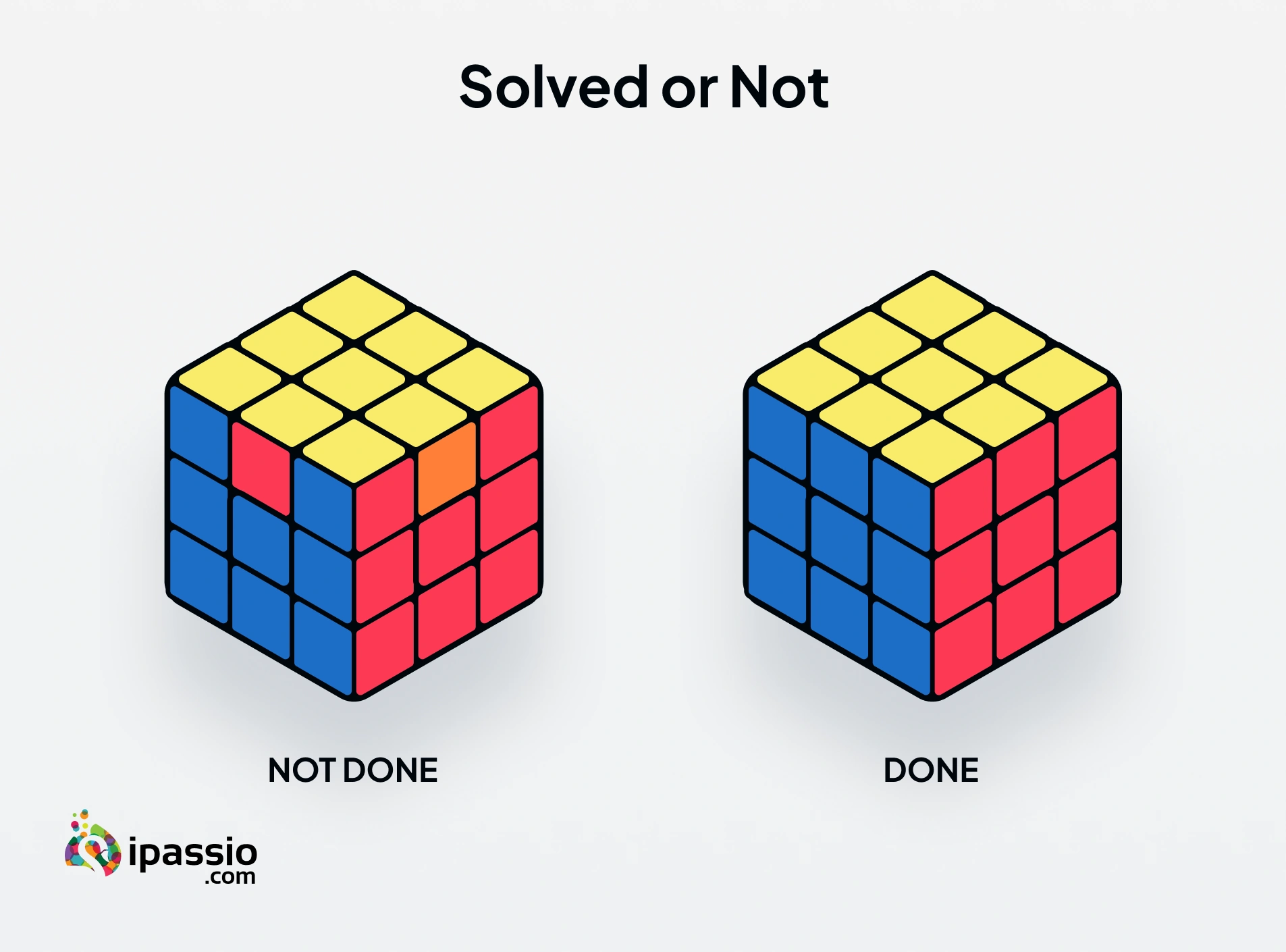
The way to go about it is to -
- Solve the bottom two layers. There are special tricks to do this fast.
- Complete the top layer to be completely in the same color.
- Move the cubies in the top layer to their correct positions. To do this quickly, you need to memorize shortcuts for different situations.
It might sound puzzling to many people. But there are ways to achieve these goals. There are different situations and alignments of cubies. and there are equivalent ways to solve it. It is a matter of practice and getting used to the Cube.
The blog How to Solve a Rubik's Cube explains a standard, seven-step procedure to solve rubik's cube.
Variations
There are many types of Rubik's Cube. The most common ones change the "order" of the cube, which means the number of layers on each side. The best-known cubes are the 2×2×2 (Pocket/Mini Cube), the standard 3×3×3, the 4×4×4 (Rubik's Revenge/Master Cube), and the 5×5×5 (Professor's Cube). These are all sold under the official Rubik's brand. The World Cube Association (WCA) holds speed-solving competitions for cubes up to 7×7×7. Bigger cubes are harder to handle and can break more easily. Solving times also increase a lot with larger cubes.
There are even larger cubes made by other companies, especially from China. The 17×17×17, 21x21x21, 33x33x33 are some of the examples. The Rubik's Cube has inspired many similar puzzles called twisty puzzles. These include cubes of different sizes and various shapes like tetrahedrons (Pyraminx), octahedrons (Skewb Diamond), dodecahedrons (Megaminx), and icosahedrons (Dogic). Some puzzles, like Rubik's Snake and Square One, can change their shape.
In 2011, Guinness World Records recognized a 17×17×17 cube made by Oskar van Deventer as the "largest order Rubik's magic cube". On December 2, 2017, Grégoire Pfennig announced a 33×33×33 cube, aiming for a new record. On April 8, 2018, Pfennig also announced a 2x2x50 cube, setting another record.
Rubik's Cube Champions and Record Breakers
► Max Park
► Luke Garrett
► Yiheng Wang
► Yusheng Du
► Tymon Kolasiński


